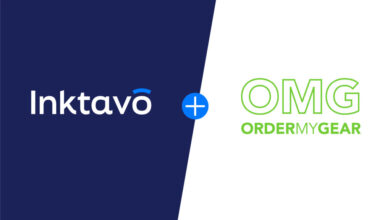When using a general-purpose 40-weight thread, you have the choice of using a #60/8, #65/9, or #75/11 needle. The best rule of thumb would be to use the smallest needle with which you are comfortable. This is because the smaller the needle, the smaller the penetration holes will be, and the smaller penetration holes will deliver a crisp, better look to your design. Sometimes a large eye needle will allow you enough flexibility that you can go down a needle size and not struggle with threading your needles. For those new to embroidery, feel free to start with the #75/11 and work down to a smaller one as your comfort level grows, and your technique improves.
When using a thinner 60-weight thread for small lettering or fine detail, a #65/9 needle is a good choice; and when using 75-weight thread, even thinner than 60-weight, a #60/8 needle is suggested. Remember that as the thread weight gets higher, and the thickness decreases, a smaller needle should be used.
Conversely, as the thread weight is assigned a lower number, and the thickness increases, a larger needle must be used. For example, a 30-weight thread would run well with either a #75/11 or an #80/12 needle. Even thicker, a 12-weight thread requires a large #100/16 needle.
As a general rule, the smallest size needle suggested for each thread weight will provide the crispest design. Also, don’t forget to keep in mind the fabric you are using. Ballpoint needles should be used with knits to keep them from “running” and light woven materials, while Sharp needles are best for piercing through structured caps and heavy woven fabrics.
Find more on embroidery needles here.



